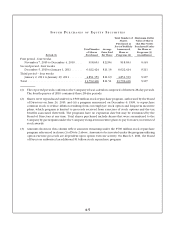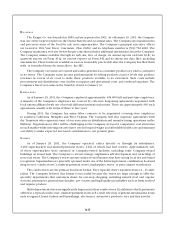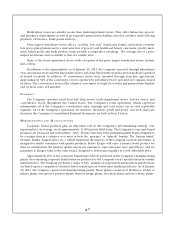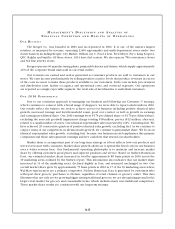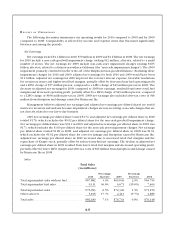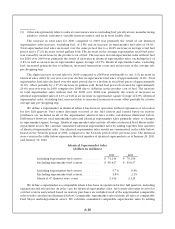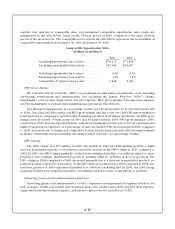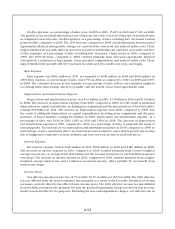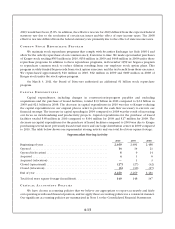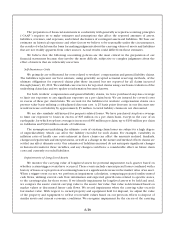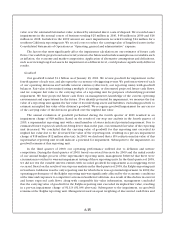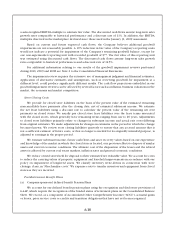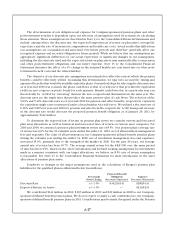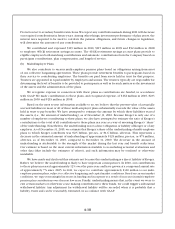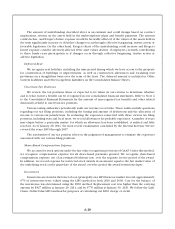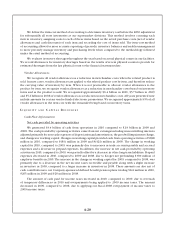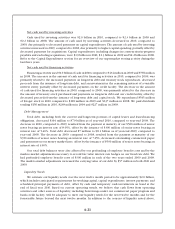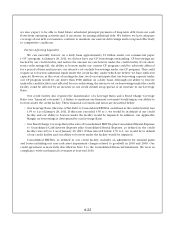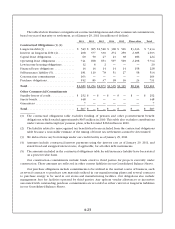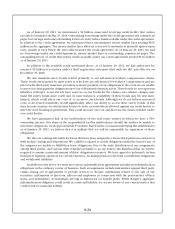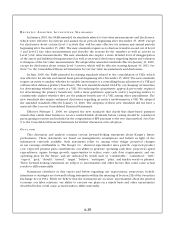Kroger 2010 Annual Report Download - page 95
Download and view the complete annual report
Please find page 95 of the 2010 Kroger annual report below. You can navigate through the pages in the report by either clicking on the pages listed below, or by using the keyword search tool below to find specific information within the annual report.
A-15
value over the estimated fair market value, reduced by estimated direct costs of disposal. We recorded asset
impairments in the normal course of business totaling $25 million in 2010, $48 million in 2009 and $26
million in 2008. Included in the 2009 amount are asset impairments recorded totaling $24 million for a
southern California reporting unit. We record costs to reduce the carrying value of long-lived assets in the
Consolidated Statements of Operations as “Operating, general and administrative” expense.
The factors that most significantly affect the impairment calculation are our estimates of future cash
flows. Our cash flow projections look several years into the future and include assumptions on variables such
as inflation, the economy and market competition. Application of alternative assumptions and definitions,
such as reviewing long-lived assets for impairment at a different level, could produce significantly different
results.
Goodwill
Our goodwill totaled $1.1 billion as of January 29, 2011. We review goodwill for impairment in the
fourth quarter of each year, and also upon the occurrence of triggering events. We perform reviews of each
of our operating divisions and variable interest entities (collectively, our reporting units) with goodwill
balances. Fair value is determined using a multiple of earnings, or discounted projected future cash flows,
and we compare fair value to the carrying value of a reporting unit for purposes of identifying potential
impairment. We base projected future cash flows on management’s knowledge of the current operating
environment and expectations for the future. If we identify potential for impairment, we measure the fair
value of a reporting unit against the fair value of its underlying assets and liabilities, excluding goodwill, to
estimate an implied fair value of the division’s goodwill. We recognize goodwill impairment for any excess
of the carrying value of the division’s goodwill over the implied fair value.
The annual evaluation of goodwill performed during the fourth quarter of 2010 resulted in an
impairment charge of $18 million. Based on the results of our step one analysis in the fourth quarter of
2010, a supermarket reporting unit with a small number of stores indicated potential impairment. Due to
estimated future expected cash flows being lower than in the past, our estimated fair value of the reporting
unit decreased. We concluded that the carrying value of goodwill for this reporting unit exceeded its
implied fair value due to the decreased fair value of the reporting unit, resulting in a pre-tax impairment
charge of $18 million ($12 million after-tax). In 2009, we disclosed that a 10% reduction in fair value of this
supermarket reporting unit would indicate a potential for impairment. Subsequent to the impairment, no
goodwill remains at this reporting unit.
In the third quarter of 2009, our operating performance suffered due to deflation and intense
competition. During the third quarter of 2009, based on revised forecasts for 2009 and the initial results
of our annual budget process of the supermarket reporting units, management believed that there were
circumstances evident to warrant impairment testing of these reporting units. In the third quarter of 2009,
we did not test the variable interest entities with recorded goodwill for impairment as no triggering event
occurred. Based on the results of our step one analysis in the third quarter of 2009, the Ralphs reporting unit
in Southern California was the only reporting unit for which there was a potential impairment. In 2009, the
operating performance of the Ralphs reporting unit was significantly affected by the economic conditions
at the time and responses to competitive actions in Southern California. As a result of this decline in current
and future expected cash flows, along with comparable fair value information, management concluded
that the carrying value of goodwill for the Ralphs reporting unit exceeded its implied fair value, resulting
in a pre-tax impairment charge of $1,113 ($1,036 after-tax). Subsequent to the impairment, no goodwill
remains at the Ralphs reporting unit. Management used an equal weighting of discounted cash flows and


